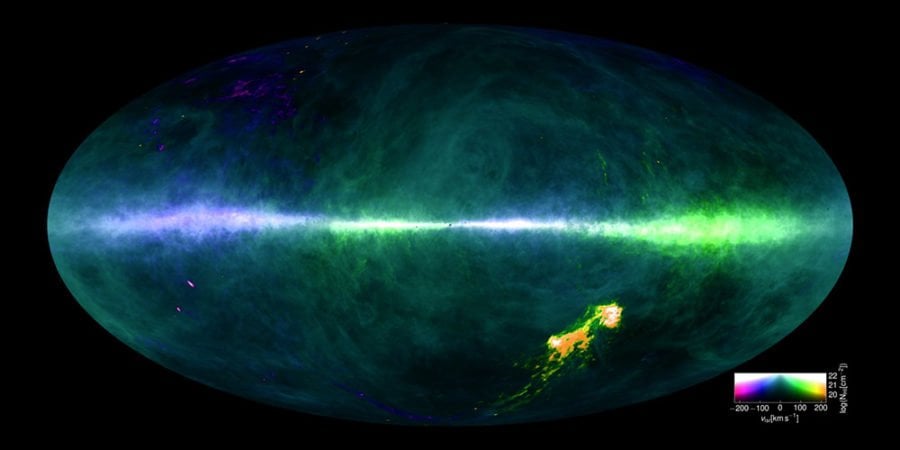Study reveals new details of our galaxy

A JOINT EFFORT by astronomers has for the first time mapped out the finer details of the Milky Way.
The study looked at the most abundant ingredient in space, atomic hydrogen, across the sky in a survey called HI4PI.
Professor Lister Staveley-Smith, from the International Centre for Radio Astronomy Research (ICRAR), said the recent study combined existing research from Germany and Australia to reveal in high-resolution details of matter existing between stars in the Milky Way.
The findings “provide the first complete and detailed view of the hydrogen in the Milky Way and a base for future surveys,” said Professor Naomi McClure-Griffiths, the team leader of the Australian part of the survey. The research is published in the journal of Astronomy and Astrophysics.
HI4PI Animation from ICRAR on Vimeo.
Dr Benjamin Winkel, from the Max Planck Institute for Radio Astronomy in Germany said mapping the whole sky involves a lot of manpower. “Large surveys offer so much information that a single paper wouldn’t be sufficient to cover everything,” he said.
Using data from two of the world’s largest telescopes, the Effelsberg Radio Telescope in Germany and Parkes Observatory in Australia, the paper combined more than a million individual observations and over a billion different data points of the entire sky.
While atomic hydrogen is easy to detect, ‘noise’ emitted by mobile phones, broadcasting stations and the telescopes themselves make forming a detailed understanding of our galaxy’s structure extremely difficult.
“Sophisticated computer algorithms have to be developed to clean each individual data point of this unwanted human interference,” explained Dr Juergen Kerp from Bonn University.
The study improves the previous Leiden-Argentine-Bonn (LAB) survey twice in its sensitivity and four times in resolution.
According to Benjamin, the next step will involve examining the northern hemisphere, again with the Effelsberg telescope, in the hope of reducing noise by a further 40 per cent. As for the rest of the universe, he said “we are currently working on processing the recorded spectra and searching for extra-galactic objects – other galaxies in the “local universe”.
While astronomers continue to hone in on the fine details, the overarching objective is to form an understanding of where the gas that feeds our galaxy comes from.
The study will be made freely available to scientists through the Strasbourg astronomical data centre.
READ MORE:
- Gaia satellite to build most detailed 3D map of the Milky Way ever made
- Top 10 Aussie space milestones

